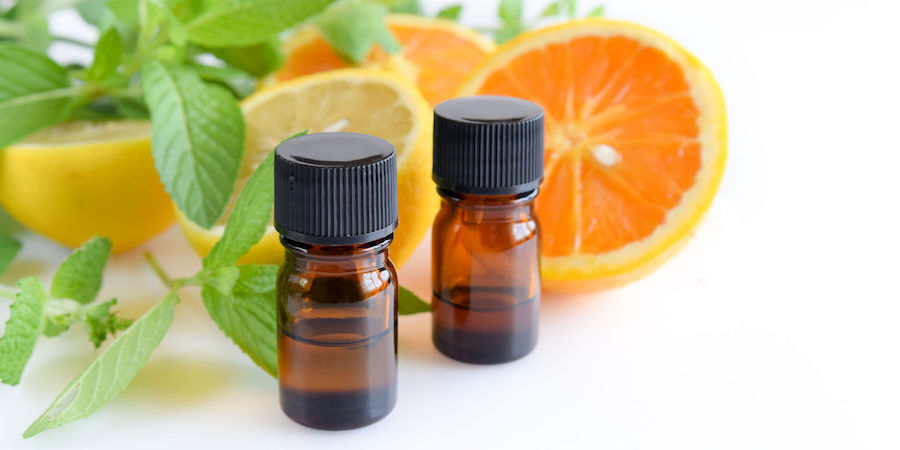In a long overdue move, the Food and Drug Administration (FDA) recently announced a ban on antibacterial soaps containing potentially harmful chemicals. Echoing what holistic wellness experts have known for a while, the FDA stated that chemicals in antibacterial soaps are no more effective at killing germs and preventing illness than plain soap and water.[1]
Not only are these chemicals not as effective, they’re actually harmful to you. According to the director of the FDA’s Center for Drug Evaluation and Research (CDER), “[W]e have no scientific evidence that they are any better than plain soap and water. In fact, some data suggests that antibacterial ingredients may do more harm than good over the long-term.”
Two of the main active ingredients used in antibacterial products (like antibacterial hand soaps, body washes, dish soap, etc.), triclosan and triclocarban, can contribute to bacterial resistance and even negative hormonal effects. In 2013, the FDA instated a rule that required manufacturers to provide data on the efficacy and safety of 19 ingredients used in antibacterial soaps. The manufacturers could not produce this data. (Probably because these chemicals are not more effective than plain soap and water and actually cause major health issues!)
The FDA has given manufacturers one year to phase out the active antibacterial ingredients in these products.
You might be thinking: Are plain soap and water really enough to protect my family and me?
Yes. When you wash your hands correctly—wet your hands with plain soap and water; lather well; rub hands, sides of fingers, and beneath finger nails for at least 30 seconds; rinse thoroughly with running water; and dry well with a fresh towel, hot air, or a clean disposable towel—you decrease your chances of catching a plethora of communicable diseases. According to the CDC: “Handwashing has been clearly shown to prevent a variety of diseases and is one of the most important ways to protect oneself and others from infections.”[2]

Give Plain Soap and Water a Boost with Essential Oils
One way to get the most out of your hygiene routine: add essential oils to your hand soap.
While nasty chemicals like triclosan and triclocarban can actually cause harm to you and the environment,[3] essential oils smell great and provide natural disinfecting benefits.[4]
Plus, essential oils can be uplifting, energizing, calming, and purifying.[5] So you can even customize your DIY soap experience for your mood or time of day!
Here are 30 cleansing essential oils you can add to plain, organic liquid hand soap. Plus, they smell amazing! Not sure how to get the perfect blend of aromas in your soap? Check out ACHS President Dorene Petersen’s blog post on the art of pairing essential oils.
- Basil Ocimum basilicum (L.)
- Bay Laurus nobilis (L.)
- Bergamot Citrus aurantium (L.) var. bergamia[6]
- Black pepper Piper nigrum (L.)
- Cajeput Melaleuca leucadendron (L.)
- Cardamom Elettaria cardamomum (L.)
- Clary sage Salvia sclarea (L.)
- Cedar Cedrus atlantica (G.Manetti)
- Chamomile, Roman Chamaemelum nobile (L.) All.
- Cinnamon Cinnamomum zeylanicum (Blume)
- Clove Eugenia caryophyllata (Thunb.)
- Eucalyptus Eucalyptus globulus (Labill.)
- Fir needle Abies balsamea (L.)
- Geranium Pelargonium graveolens (L'Her.)
- Ginger Zingiber officinale (Roscoe)
- Grapefruit Citrus paradisi (Macfad.)
- Lavender Lavandula angustifolia (Mill.)
- Lemon Citrus limonum (Risso)
- Immortelle Helichrysum italicum (Roth)
- Juniper Juniperus communis (L.)
- Patchouli Pogostemon cablin (Benth.)
- Peppermint Mentha ×piperita (L.)
- Pine Pinus sylvestris (L.)
- Rosemary Rosmarinus officinalis (L.)
- Sandalwood Santalum album (L.)
- Spearmint Mentha spicata (L.)
- Tea tree Australia Melaleuca alternifolia (Cheel)
- Tea tree New Zealand Leptospermum scoparium (Forst.)
- Vetiver Vetiveria zizanioides (Nash)
- Ylang ylang Cananga odorata (Lam.) var. genuina

Make the Switch but Stay Green!
Now go swap those “antibacterial” products with delicious-smelling essential oil hand soap!
An important note before you swap: since triclosan and triclocarban are very toxic to aquatic life, do NOT pour these products down the drain. One option is to bring them to your local Household Hazardous Waste depot (if they accept soap products).
If they’re not accepted at your local Household Hazardous Waste depot, solid products, such as bar soap, can be disposed of in the trash. With liquid products, however, it can be a bit trickier. Try this:
Dissolve liquid antibacterial soap in water and place into a container with a charcoal filter (such as those used for water purification). Let sit for 24 hours. Then, dispose of the water from the container down the drain and throw the charcoal filter in the trash. While the charcoal cannot capture all the harmful chemicals in antibacterial soap, it will at least reduce the amount that is released into the environment.
Lastly, don’t forget to recycle any plastic containers!
Here’s a favorite aromatic hand soap recipe we use at the ACHS and Apothecary Shoppe campuses:
Light and Happy Liquid Hand Soap
Lavender Lavandula angustifolia oil: 10 drops
Ylang ylang Cananga odorata var. genuina oil: 6 drops
Bergamot Citrus aurantium var. bergamia oil: 4 drops
Add the blend to 120 ml (4 ounces) of plain liquid soap base. This is about a 2% dilution, and the soap is quite fragrant, so dilute more if you prefer a gentler aroma.
Disclosure of Material Connection: This blog may contain affiliate links. If this blog contains affiliate links, they will be marked with an asterisk. I am disclosing this in accordance with the Federal Trade Commission’s 16 CFR, Part 255: “Guides Concerning the Use of Endorsements and Testimonials in Advertising.”
This article is for informational purposes only. It is not intended to treat, diagnose, cure, or prevent disease. This article has not been reviewed by the FDA. Always consult with your primary care physician or naturopathic doctor before making any significant changes to your health and wellness routine.
[1] Food and Drug Administration, Office of the Commissioner (2016) FDA issues final rule on safety and effectiveness of antibacterial soaps. Retrieved from: http://www.fda.gov/NewsEvents/Newsroom/PressAnnouncements/ucm517478.htm (Accessed: 28 September 2016).
[2] CDC (2015) Publications, data, & statistics. Retrieved from: http://www.cdc.gov/handwashing/publications-data-stats.html (Accessed: 28 September 2016).
[3] Environmental Working Group (2016) Tip 5 - wash those hands, but avoid Triclosan. Retrieved from: http://www.ewg.org/research/healthy-home-tips/tip-5-wash-those-hands-avoid-triclosan (Accessed: 28 September 2016).
[4] Chovanová, R., Mikulášová, M., & Vaverková, S. (2013). In Vitro Antibacterial and Antibiotic Resistance Modifying Effect of Bioactive Plant Extracts on Methicillin-Resistant Staphylococcus epidermidis. Int J Microbiol., 2013:760969.
[5] Prabuseenivasan, S., Jayakumar, M. and Ignacimuthu, S. (2006) ‘In vitro antibacterial activity of some plant essential oils’, BMC Complement Altern Med, 6.
[6] Note of caution: be sure to rinse your hands thoroughly when using citrus oils like bergamot, grapefruit, etc. as these oils can cause photosensitivity when applied topically.






